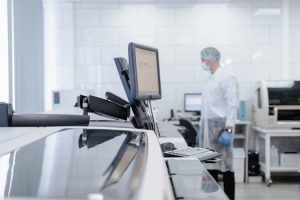Biometric Tracking in Schools: Privacy Concerns vs. Safety Benefits
Welcome to the age of biometric tracking in schools. As technology continues to evolve, schools have taken a leap into using biometric systems to track student attendance, eliminate bullying, and ensure enhanced safety. With the use of biometric data, schools are able to identify students through physical traits such as fingerprints, facial recognition, and voice patterns. While these systems promise to provide several benefits, they have also raised concerns about privacy and security. In this article, we will delve deeper into this controversial topic of Biometric Tracking in Schools: Privacy Concerns vs. Safety Benefits.
The Rise of Biometric Tracking in Schools
According to a study conducted by the Center for Biometrics and Security Research, more than 50% of schools in the United States have implemented biometric systems in the past decade. The use of biometrics in schools has gained popularity due to its promise of enhanced efficiency and improved safety. With the use of biometric systems, schools are able to accurately track student attendance, manage bus routing, and provide secure access to school facilities.
The Promised Benefits
One of the biggest benefits of biometric tracking in schools is the ability to accurately track student attendance. With traditional methods, schools often struggle with inaccuracy and fraud. Students might take attendance for their absent peers or even use fake IDs to check in for their friends. This not only leads to loss of instructional time but also affects school funding based on attendance records. Biometric systems, on the other hand, eliminate the possibility of fraudulent attendance. Each student’s presence is verified through their unique biometric data, ensuring accurate attendance records.
Another significant advantage of biometric tracking in schools is its potential in enhancing safety. With the use of biometric systems, schools are able to monitor who is entering their premises and keep track of students’ whereabouts during school hours. This can help curb incidents of bullying, fights, and other unsafe behaviors. In cases of emergencies, such as natural disasters or school shootings, biometrics can provide valuable information about student location and facilitate swift evacuation procedures.
The Concerns about Privacy and Security
Despite the promised benefits, biometric tracking in schools has also sparked concerns about privacy and security. Biometric data is highly personal and can reveal sensitive information about an individual. With systems collecting data such as fingerprints and facial recognition, parents and students are worried about the misuse of this information. There have been instances where biometric data was compromised due to weak security measures, raising questions about the safety of student information.
The Need for Strong Regulations
As schools continue to embrace biometric tracking, it is essential to have strong regulations in place to ensure the privacy and security of student data. These regulations should outline the purpose and scope of data collection, the type of data being collected, and the measures in place to protect the data. Schools must also get consent from parents before collecting biometric data from students, with an option to opt-out if they wish.
Additionally, there should be strict rules against the sharing of biometric data with third parties. School officials should ensure that the systems used are secure, and only authorized personnel have access to the data. Regular audits and assessments should also be conducted to identify potential vulnerabilities and address them before any data breaches occur.
The Final Verdict
In conclusion, biometric tracking in schools presents both benefits and concerns. While it promises enhanced efficiency and safety, it also raises questions about privacy and security. As technology evolves, it is essential to have strong regulations in place to ensure the protection of students’ personal information. With appropriate measures and guidelines, schools can reap the benefits of biometric tracking while safeguarding the privacy and security of their students.
Biometric tracking in schools is a complex and controversial topic that requires careful consideration. As we continue to witness advancements in technology, it is essential to find a balance between the benefits and concerns of implementing biometrics in schools. Ultimately, the safety and well-being of students must always remain the top priority, and it is up to schools and regulatory bodies to strike the right balance.











